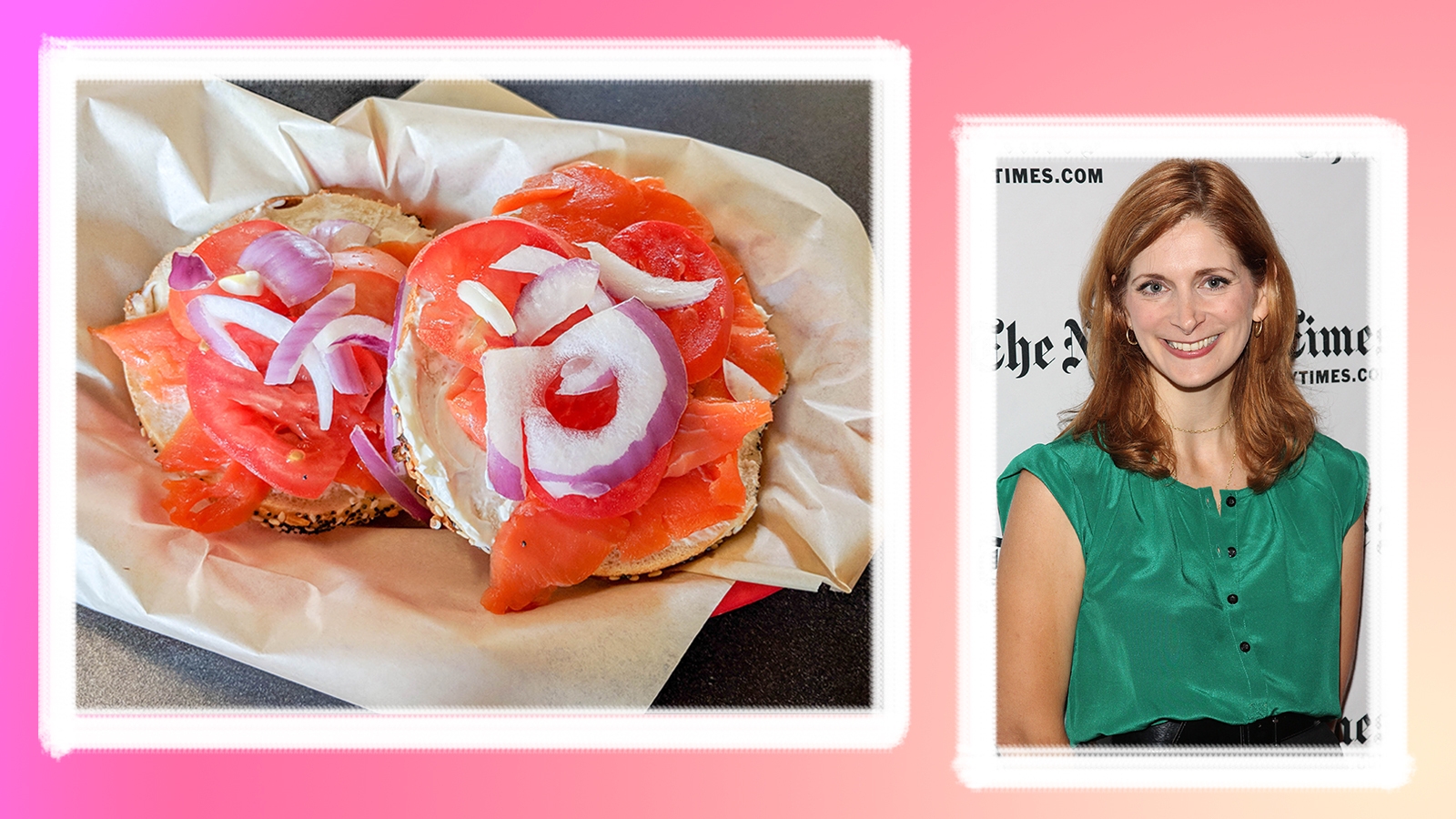She introduced us all to the ease and the joy of sheet pan cooking, and she encourages us to feel free to swap one ingredient for another. Melissa Clark, a longstanding and beloved food columnist for The New York Times, creates recipes that are delicious, inventive, and forgiving. Want to make a bean stew but don’t have time to cook the chickpeas? No problem — use canned. You like the pappardelle Bolognese with lentils and sausages but would rather make it without meat? Leave it out and add extra olive oil for richness.
Yet, for Clark, there is one dish that is sacrosanct: her bagels. She is precise about what she puts on her bagel, and there is nothing laid-back about it.
This is probably no surprise coming from a third-generation Brooklynite who boasts on her website of “knowing where to find the best bagel.” One of her fondest childhood Jewish food memories is of going to the appetizing store on Avenue C in Brooklyn with her father and sister on many a Sunday morning. Her father would order 3/8 of a pound of nova – “Never half a pound! Always 3/8ths!” — and have them slice it very thin so that it went further. Then he would take his two girls next door to the kosher bakery for fresh bagels. It was, she says, “a special ritual.”
Her most recent cookbook, Dinner in French, is about making classic French food through a modern lens. All of her cookbooks — she has written more than 40 — contain recipes and ingredients that span the globe, like red lentil dhal with spiced brown butter and yogurt, or sheet pan roasted sausage and cauliflower seasoned with cumin and Turkish pepper.
The Nosher celebrates the traditions and recipes that have brought Jews together for centuries. Donate today to keep The Nosher's stories and recipes accessible to all.
Still, some of her favorite childhood culinary memories are built around Jewish food. Her father often made gribenes, crispy chicken skin fried in chicken fat, and he always saved her some because he knew that she loved it. She pulled chicken feet out of her Grandma Ella’s pot of soup and sucked on them “like lollipops,” said Clark. And a family favorite was ptcha, calf’s foot boiled with garlic and bay leaves, that her pediatrician and family friend, Dr. Ruby, would bring to the family once a year. They would eat it on challah.
“Cooking food and sharing it with the people you care about is how my family showed love,” said Clark. As recently as last month, Clark published an article about challah entitled: “This Rich Challah May Be as Good as a Hug From Mom,” in which she celebrated her mother’s return home from the hospital by baking her challah. In Clark’s inventive recipe, she proofs the yeast in orange juice, and she swaps out vegetable oil for more boldly flavored olive oil.
Clark’s most beloved dish from her childhood is perhaps the most pedestrian: broad noodles mixed with cottage cheese, cinnamon, sugar, and raisins, and topped with melted butter, made by her mother. “Like an unbaked kugel,” Clark described it. You can find cottage cheese in many of the images she posts on Instagram, like one for macaroni and cheese, or celery stuffed with cottage cheese and drizzled with miso chile oil, or her favorite snack of pineapple chunks topped with cottage cheese and chile.
But back to the bagel. She has an elaborate — and precise — “ritual” for preparing them, she said.
Her bagels of choice are Black Seed Bagels. “To me they are perfect,” Clark said. She loves every type of bagel — plain, sesame, even cinnamon raisin! But everything bagels are her absolute favorite.
Her perfectly assembled bagel goes like this: devote half of the bagel to sable and the other half to lox — a mild nova, to be precise. Half of the lox side should have plain cream cheese topped with lox; the other half of the lox side would have a thin layer of cream cheese, a thin layer of whitefish salad, and then the mild nova. Cover that side with capers, black pepper, and tomatoes. “The important thing,” she said, “is to salt the top of the tomato because, otherwise, it is not salty enough.”
And then, on the sable half of the bagel, shmear half of it with sweet butter topped with sable. On the other portion, use butter, sable, and whitefish salad. Hold the tomato. Never, ever add tomato to the sable side of the bagel!
So while Clark may be an expert at encouraging home cooks to mix things up and take chances, and she may have items like homemade harissa and preserved lemons in her fridge, certain things — like the perfect bagel and cream cheese — are inviolable. “Bagels and lox,” she said, “is the most essential Jewish food memory I have.”



